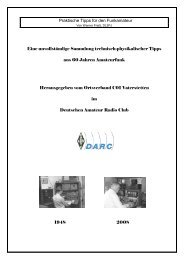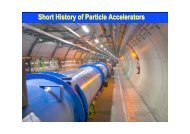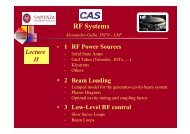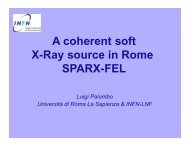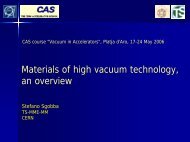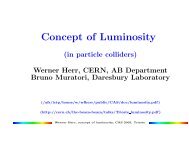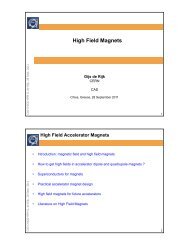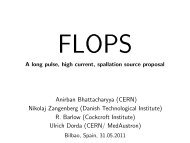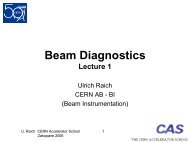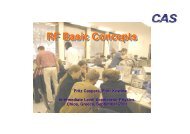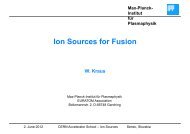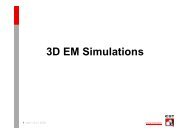mode - CERN Accelerator School
mode - CERN Accelerator School
mode - CERN Accelerator School
You also want an ePaper? Increase the reach of your titles
YUMPU automatically turns print PDFs into web optimized ePapers that Google loves.
Accelerating structure: the<br />
choice of frequency<br />
approximate scaling laws for linear accelerators:<br />
RF defocusing g( (ion linacs) ) ~ frequency q y<br />
Cell length (=βλ/2) ~ (frequency) -1<br />
Peak electric field ~ (frequency) 1/2<br />
Shunt impedance (power efficiency) ~ (frequency) 1/2<br />
Accelerating structure dimensions ~ (frequency) 1 -1<br />
Machining tolerances ~ (frequency) -1<br />
Higher frequencies are economically convenient (shorter, less RF power, higher<br />
gradients possible) but limitation comes from mechanical precision in construction<br />
(tight tolerances are expensive!) and beam dynamics for ion linacs at low energy.<br />
Electron linacs tend to use higher frequencies (0.5-12 GHz) than ion linacs. Standard<br />
ffrequency 3 GH GHz (10 cm wavelength). l th) NNo li limitations it ti ffrom bbeam ddynamics, i iiris i iin TW<br />
structure requires less accurate machining than nose in SW structure.<br />
Proton linacs use lower frequencies (100-800 MHz), increasing with energy (ex.: 350 –<br />
700 MHz): compromise between focusing, focusing cost and size. size<br />
Heavy ion linacs tend to use even lower frequencies (30-200 MHz), dominated by the<br />
59<br />
low beta in the first sections (<strong>CERN</strong> RFQ at 100MHz, 25 keV/u: βλ/2=3.5mm !)



